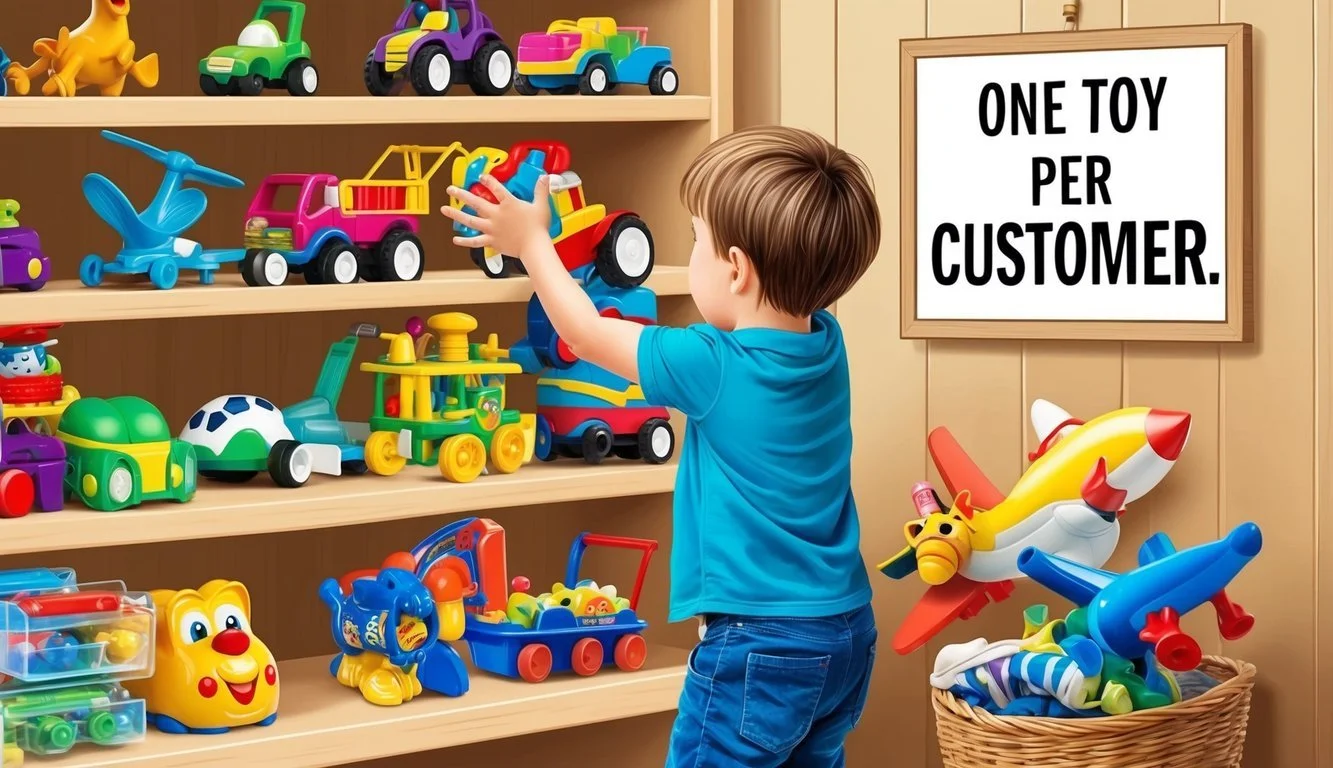ADHD Impulsivity Only: Understanding Its Impact and Management Strategies
ADHD impulsivity refers to the tendency to act without thinking in individuals with Attention Deficit Hyperactivity Disorder. This characteristic often manifests as hasty decision-making, interrupting others, or engaging in risky behaviors. ADHD impulsivity is a core symptom of the hyperactive-impulsive and combined types of ADHD, affecting both children and adults.
People with ADHD impulsivity may struggle to control their immediate reactions, leading to difficulties in various areas of life. They might blurt out answers before questions are completed, have trouble waiting their turn, or make important choices without considering the consequences. These behaviors can impact relationships, work performance, and overall quality of life.
Managing ADHD impulsivity involves a combination of strategies, including medication, behavioral therapy, and lifestyle adjustments. With proper support and treatment, individuals can learn to recognize their impulsive tendencies and develop coping mechanisms to mitigate their impact. Understanding the nature of ADHD impulsivity is crucial for those affected and their loved ones to navigate the challenges it presents.
Understanding ADHD
Attention-Deficit/Hyperactivity Disorder (ADHD) is a complex neurodevelopmental condition that affects both children and adults. It involves persistent patterns of inattention, hyperactivity, and impulsivity that interfere with daily functioning and development.
Definition and Prevalence
ADHD is characterized by ongoing difficulties with attention, hyperactivity, and impulse control that are more frequent and severe than typically observed in individuals at a comparable level of development. The disorder affects approximately 5-7% of children and 2.5% of adults worldwide.
Symptoms often emerge in early childhood and can persist into adulthood. ADHD manifests differently across individuals, with some experiencing predominantly inattentive symptoms, others showing mainly hyperactive-impulsive traits, and some exhibiting a combination of both.
The condition impacts various aspects of life, including academic performance, social relationships, and occupational functioning. Genetic factors play a significant role in ADHD development, with heritability estimated at 74%.
Diagnosis of ADHD
Diagnosing ADHD involves a comprehensive evaluation process conducted by qualified healthcare professionals. No single test can definitively diagnose the disorder. Instead, clinicians use multiple assessment tools and criteria.
The diagnostic process typically includes:
Clinical interviews
Behavioral observations
Standardized rating scales
Cognitive testing
Medical examinations
Professionals assess symptom severity, duration, and impact across different settings. The Diagnostic and Statistical Manual of Mental Disorders (DSM-5) provides specific criteria for ADHD diagnosis, requiring the presence of at least six inattentive or hyperactive-impulsive symptoms for children, and five for adults.
Symptoms must persist for at least six months, occur in multiple settings, and significantly impair daily functioning. Differential diagnosis is crucial to rule out other conditions that may mimic ADHD symptoms.
ADHD and Impulsivity
Impulsivity is a core symptom of Attention-Deficit/Hyperactivity Disorder (ADHD). It manifests as a tendency to act without thinking and can significantly impact daily functioning. Understanding its characteristics and how it differs across ADHD presentations is crucial for effective management.
Characteristics of Impulsivity in ADHD
Impulsivity in ADHD often presents as:
Interrupting others during conversations
Blurting out answers before questions are completed
Difficulty waiting one's turn
Making rash decisions without considering consequences
Engaging in risky behaviors
These impulsive behaviors stem from difficulties in impulse control and self-regulation. Individuals with ADHD may struggle to suppress inappropriate responses or delay gratification. This can lead to social challenges, academic difficulties, and potential safety risks.
Differences from Other ADHD Presentations
Impulsivity manifests differently across ADHD presentations:
Hyperactive-Impulsive Type:
Prominent impulsive and hyperactive symptoms
Less significant inattentive symptoms
More physical restlessness and fidgeting
Inattentive Type:
Fewer overt impulsive behaviors
More internal, cognitive impulsivity (e.g., racing thoughts)
Greater difficulties with focus and organization
Combined Type:
Exhibits both impulsive and inattentive symptoms
May show a mix of physical and cognitive impulsivity
The hyperactive-impulsive type is considered the rarest ADHD presentation. Impulsivity in ADHD can vary in intensity and manifestation across individuals and situations.
Impact of Impulsivity
Impulsivity in ADHD affects personal relationships, educational performance, and workplace productivity. It can strain social interactions, hinder academic progress, and lead to challenges in professional settings.
On Personal Relationships
Impulsive behaviors can strain personal relationships. ADHD individuals may interrupt conversations, make rash decisions, or react emotionally without considering consequences. These actions can lead to misunderstandings and conflicts with partners, family members, and friends.
Impulsivity may cause difficulties in maintaining long-term relationships. Spontaneous purchases or risky behaviors can create financial stress and trust issues. Partners may feel unheard or undervalued due to frequent interruptions or lack of attention during conversations.
However, some positive aspects exist. ADHD individuals often bring excitement and spontaneity to relationships. Their impulsive nature can lead to fun, unexpected experiences that keep relationships dynamic and engaging.
In Educational Settings
Impulsivity can significantly impact academic performance. Students with ADHD may blurt out answers before questions are completed, struggle to wait their turn, or have difficulty following instructions.
These behaviors can disrupt classroom dynamics and hinder learning. Impulsive students might rush through assignments, missing important details or making careless errors. They may also struggle with time management, procrastinating on important tasks until the last minute.
On the positive side, impulsivity can sometimes lead to creative problem-solving and unique perspectives in academic discussions. When properly channeled, this trait can contribute to innovative thinking and out-of-the-box solutions.
In the Workplace
Impulsivity in the workplace can pose significant challenges. ADHD employees may struggle with prioritizing tasks, meeting deadlines, or following through on long-term projects. They might make hasty decisions without fully considering consequences.
Impulsive behaviors can strain professional relationships. Interrupting colleagues during meetings or acting without consulting team members can create tension. These actions may be perceived as disrespectful or unprofessional.
Despite these challenges, impulsivity can have positive aspects in certain work environments. ADHD individuals often excel in fast-paced settings that require quick thinking and adaptability. Their spontaneity can lead to innovative ideas and creative problem-solving approaches.
Management Strategies
Effective strategies can help individuals with ADHD manage impulsivity. These approaches focus on behavioral techniques, medication options, and lifestyle adjustments to improve self-control and reduce impulsive behaviors.
Behavioral Interventions
Cognitive Behavioral Therapy (CBT) is a widely used technique for managing ADHD impulsivity. It helps individuals identify triggers and develop coping mechanisms. Mindfulness practices teach awareness of thoughts and actions, allowing for more deliberate decision-making.
Time management tools like calendars and reminders can structure daily activities, reducing impulsive reactions. Breaking tasks into smaller, manageable steps helps maintain focus and prevents hasty decisions.
Social skills training improves interpersonal interactions by teaching appropriate responses and turn-taking in conversations. This can reduce impulsive interruptions and enhance relationships.
Medication Options
Stimulant medications like methylphenidate and amphetamines are the most common pharmacological treatments for ADHD. These drugs increase dopamine levels in the brain, improving focus and impulse control.
Non-stimulant options include atomoxetine, guanfacine, and bupropion. These medications can be effective for those who don't respond well to stimulants or have contraindications.
It's crucial to work closely with a healthcare provider to find the right medication and dosage. Regular follow-ups help monitor effectiveness and manage potential side effects.
Lifestyle and Coping Mechanisms
Regular exercise can significantly reduce impulsivity by increasing neurotransmitter levels and improving overall brain function. Aim for at least 30 minutes of moderate activity daily.
A balanced diet rich in omega-3 fatty acids, protein, and complex carbohydrates supports brain health and may help manage ADHD symptoms.
Adequate sleep is essential for impulse control. Establish a consistent sleep schedule and create a relaxing bedtime routine to improve sleep quality.
Stress management techniques such as deep breathing, progressive muscle relaxation, and yoga can help calm the mind and reduce impulsive reactions.
Support Systems
Effective support systems are crucial for managing ADHD impulsivity. They provide structure, encouragement, and practical assistance to help individuals cope with impulsive behaviors.
Family and Social Support
Close relationships play a vital role in managing ADHD impulsivity. Family members and friends can offer emotional support and help create a stable environment.
Educating loved ones about ADHD and its challenges enables them to provide more effective assistance. They can help establish routines, offer reminders, and provide positive reinforcement for managing impulsive behaviors.
Creating a structured home environment with visual cues and organizational systems can reduce impulsive actions. Consistent schedules and clear expectations help individuals with ADHD navigate daily tasks more successfully.
Social support groups connect people facing similar challenges. Sharing experiences and strategies can provide valuable insights and reduce feelings of isolation.
Professional and Therapeutic Support
Professional help is often essential for managing ADHD impulsivity. Mental health professionals specializing in ADHD can provide targeted interventions and coping strategies.
Cognitive Behavioral Therapy (CBT) helps individuals identify triggers for impulsive behaviors and develop more effective responses. It can improve self-regulation and decision-making skills.
ADHD coaches offer practical guidance for daily life management. They assist with goal-setting, time management, and organizational skills to reduce impulsive actions.
Medication, when prescribed by a healthcare professional, can help manage impulsivity symptoms. Regular follow-ups ensure proper dosage and effectiveness.
Workplace or school accommodations may include extended deadlines, quiet work areas, or frequent breaks. These supports can help minimize impulsive behaviors in structured environments.
Recent Research and Findings
New studies have shed light on the neurobiological underpinnings of ADHD impulsivity and its long-term impacts. Advanced imaging techniques and longitudinal research are revealing important insights about brain structure, function, and developmental trajectories related to impulsive behaviors in ADHD.
Neuroscientific Insights
Brain imaging studies have identified structural and functional differences in individuals with ADHD impulsivity. Reduced gray matter volume in prefrontal regions involved in impulse control has been observed. Functional MRI scans show altered activation patterns in reward and decision-making circuits.
Research points to disrupted connectivity between prefrontal control areas and subcortical regions like the striatum. This may contribute to difficulties inhibiting impulsive responses. Neurochemical imbalances, particularly in dopamine signaling, appear to play a key role.
Genetic studies have uncovered variations in dopamine receptor and transporter genes linked to impulsivity. Epigenetic factors influencing gene expression are also under investigation.
Long-Term Outcomes of Impulsivity
Longitudinal research reveals that childhood ADHD impulsivity often persists into adulthood, though symptoms may change over time. Adults with a history of ADHD impulsivity face increased risks of:
Substance use disorders
Risky sexual behaviors
Financial difficulties
Relationship problems
Occupational challenges
Early intervention appears crucial. Studies show that effective childhood treatment can mitigate long-term negative outcomes. Cognitive-behavioral therapy and medication management remain important tools.
Emerging research explores personalized treatment approaches based on impulsivity subtypes. Novel interventions like neurofeedback show promise for some individuals.
Resources and Tools
Several helpful resources and tools can assist individuals with ADHD in managing impulsivity. Timers and alarms prove valuable for time management and practicing delayed gratification. These devices provide structure and help keep tasks on track.
Visual schedules and planners offer a clear overview of daily activities, reducing the likelihood of impulsive decisions. Color-coding tasks or using symbols can enhance their effectiveness for those with ADHD.
Fidget toys and stress balls give restless hands something to do, potentially decreasing impulsive actions. These tools can be especially useful during meetings, classes, or other situations requiring sustained attention.
Mindfulness apps and guided meditation resources teach techniques for pausing before reacting. Regular practice can improve impulse control over time.
Behavior charts and reward systems help reinforce positive choices. These tools motivate individuals to think before acting and celebrate successes in managing impulsivity.
Social stories and role-playing exercises prepare ADHD individuals for potentially challenging situations. By practicing responses in advance, they can reduce impulsive reactions in real-life scenarios.
Noise-canceling headphones minimize distractions, allowing for better focus and reduced impulsive responses to environmental stimuli. These can be particularly helpful in busy or noisy environments.






